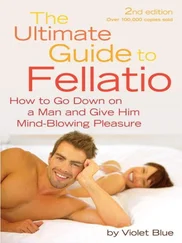Chemist A to Chemist B: The temperature is now 102!
This sentence is not a comment on the weather but is rather an evidential sentence, perhaps an observation of a pointer reading at the end of an experiment which serves to confirm a hypothetico-deductive system.†
The peculiar vocation of the therapist requires that he listen to both kinds of sentences, distinguish one from the other, and respond accordingly.
Thus the sentence
After what happened yesterday, I’ve decided that life is not worth living.
is open to one of several readings. It may be the serious expression of a decision by one man in the world to another. Perhaps the patient intends to commit suicide. More likely, it is uttered by way of a general complaint and to pass the time of day. But perhaps also it could be uttered as a data sentence, i.e., a product of the joint patient-therapist investigation of the patient’s illness. The patient is saying: I have indeed reached a decision but rather than act on it by committing suicide I am going to play the language game of analysis and offer it as data. The therapist in turn is required to decide on the spot whether the sentence (1) is a cry for help, (2) asserts commonplace low spirits, (3) offers data for the language game of analysis, or (4) is all three.
It will be seen in this context that Sullivan’s description of the psychiatrist as a participant-observer is in fact an accurate characterization of the semiotic options available in the therapist-patient encounter.
1.53. Every sentence is uttered and received in a medium.
The medium is a nontrivial parameter or variable in every transaction in which sentences are used. The medium is not necessarily the message, but the message can be strongly influenced by the medium.
In learned or instinctive behavior, stimulus S1 is received by an organism which in turn responds as it has learned or been wired to respond. To a similar stimulus S2 it responds similarly according as S2 resembles S1. A dog responds to his master’s whistle or to a recording of his master’s whistle in the same way.
But the sentence utterance I need you can provoke varying responses according as the medium varies through which it is transmitted.
If the President says to me, “I need you!” my response will vary according as the message reaches me over television or by way of a person-to-person phone call — even though the acoustic and phonemic properties of the two utterances may be identical.
1.54. Every sentence has a normative dimension.
The true-or-false property which Aristotle ascribed to propositions is only one of the norms of sentence utterances. A sentence may be true or false, significant or nonsensical, trite or fresh, bad art or good art, etc.
Behavioral scientists are uncomfortable with the normative because natural science has traditionally had nothing to do with norms. As a consequence, behavioral scientists are usually content to yield the field, to leave true-or-false propositions to logicians, bad sentences to grammarians, metaphors to poets.
Yet sentences are items of behavior and these items have normative dimensions. Therefore a behavioral account of sentence utterances must give an account of these norms.
Behavioral scientists need not have made themselves so miserable. For the fact is that the normative dimension of language behavior is not an awkward addendum to be stuck onto the elegant corpus of behavioral science. No, the normative dimension of sentence utterance is a fundamental property of the coupling of the elements of the sentence, whether the sentence be a true-or-false proposition or a good-or-bad work of art.
A sentence utterance is not like other world events and is not isomorphic with the world event or relation the sentence is about. A world event or relation is generally either an energy exchange (sodium reacting with water) or a real relation (China being bigger than Japan). But a sentence is a coupling of elements by a coupler. It is bothersome to call a world event or relation good or bad. What is good or bad about sodium reacting with water or China being bigger than Japan? But, since a sentence is a coupling of elements by a coupler, these elements can be coupled well or badly.*
World events and relations are neither true nor false but sentences can be. Yet true-or-false is only one normative dimension of sentences.
Here are some others.
Clouds are fleece is false as a literal statement, true in a sense as a metaphor, bad in the sense of being a trite metaphor.
That is a sparrow may be a true assertion of class relationship but it may also be perfunctory, a bored assignment of a commonplace object (English sparrow) to a commonplace class.
That is a dusky seaside sparrow may assert a similar relationship, yet it may be uttered with all the excitement and sense of discovery of a bird-watcher coming upon an occasional species.
Even nondeclarative sentences have normative dimensions.
Patient says to therapist, “Don’t you dare plot against me!” An imperative sentence and therefore neither true nor false but inappropriate because, let us stipulate, the therapist harbors no such plot.
Said Emperor Henry IV to Pope Gregory VII at Canossa, “I apologize.” A performative sentence, hence neither true nor false but possibly sincere or insincere.
Patient to therapist: “I see what you mean.” It is possible that the norm in question here is not whether the patient is telling the truth but whether he is uttering a sentence or a nonsentence, i.e., making a polite sound.
2. The receiver of a sentence can take or mistake the sentence.
Note that an organism cannot in this sense be said to make a mistake in responding to a stimulus in its environment, unless the word mistake is used in an analogical sense.
But can’t a bass be said to make a mistake in taking an artificial lure? Yes, but the bass does not mistake the lure except in a trivial analogical sense, however tragic the consequences for the bass. For the bass responds to the lure willy-nilly according as the lure resembles what the bass has learned or been wired to respond to.
An organism responds to a stimulus S n according as it has learned to respond to S, a class of stimuli. The probability of response to S n can be expressed statistically by a bell curve. The response to S n is the more likely as S n resembles S.
If, however, you say to me, “The Russians are coming!” it can happen that I can perfectly understand the sentence according as I have learned to understand English syntax and semantics. Yet I can utterly mistake your sentence. I may understand you to be reporting an invasion, whereas in truth you are reading a movie marquee.
In this use of the word mistake, I also exclude other errors, for example, slips, misconceptions, lies, false propositions.
A Freudian slip might be described as a dyadic irruption of unconscious forces into triadic behavior and as such does not concern us here. A slip is intrapsychic. A mistake is interpersonal. A mistake is a miscoupling of sentence elements in which I couple the elements of your sentence in some fashion other than the way you coupled them. If you say to me, “I enjoyed beating you” instead of “I enjoyed meeting you,” no mistaking of sentences has occurred. I understand you well enough. What has occurred is an irruption of your feelings into your polite triadic behavior. Such an event is interesting enough but is not germane to a study of triadic behavior as such.
If I see a piece of paper in the woods, take it for a rabbit, and say, “Look, there’s a rabbit,” haven’t I made a mistake?
Also, isn’t a lie a mistake? Suppose I did in fact see a rabbit but do not want you to shoot it and accordingly say, “Oh, that’s just a piece of paper.” Wouldn’t you be telling the truth if you replied, “You are mistaken”?
Читать дальше












